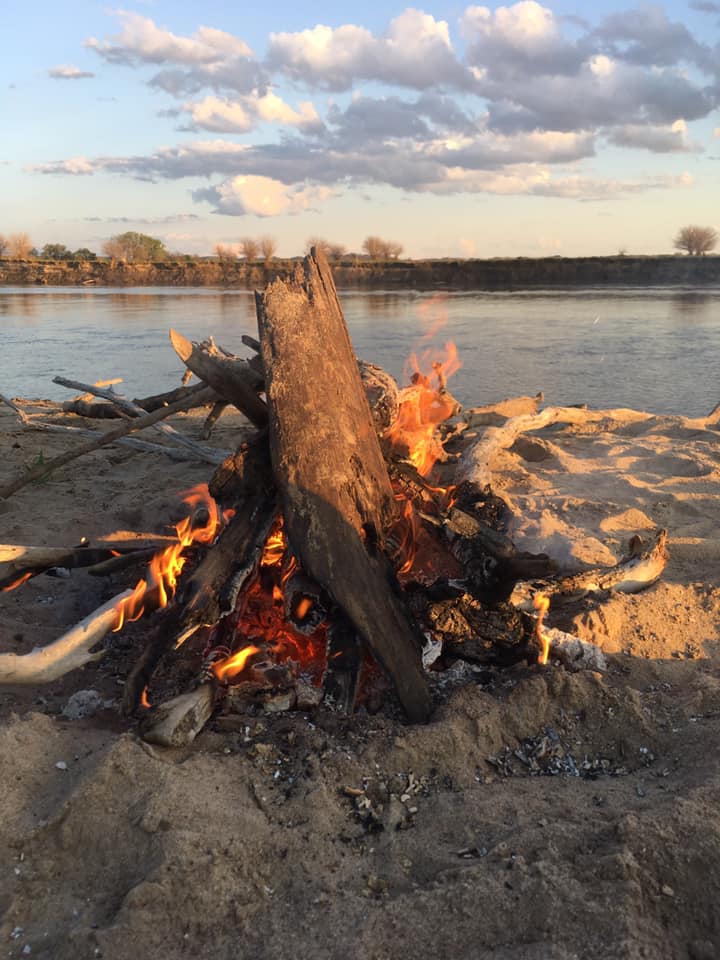
Photo by Dawn Buehler
If you’d like to have a campfire, be sure that there’s a supply of driftwood on your sandbar. This will usually be on the upriver end of an island bar and the downstream or bank side of a bank bar. Much of the river tree cover is cottonwood, maple and other light, fast-growing wood that dries quickly and burns fast. Your fire plan should include plenty of light kindling like grass, pine straw, and reeds to dry the larger sticks. Usually a pile of driftwood will contain a variety of fuels. Use finger-sized sticks for cooking, and larger fist-sized logs for the evening campfire. Usually you won’t be carrying a saw, so be realistic in your choice of firewood. A 4-5″ trunk can bank the fire for the night.
During cool and cold weather on the river you should always be ready to build a fire. A swim in the river from an overturned boat can trigger hypothermia. A warming fire is a safety measure, even if you’re not planning to camp.
If you are out immediately after rain or high water your choices in dry wood can be limited. Use the standard tricks like splitting big logs to get to the dryer center. If you want to bring your own firewood, check before crossing county lines; forest products are quarantined on the Eastern end of the river due to the Emerald Ash Borer.
Your group should have two or more ways to start a fire; like matches, torch, flint, lighter. Carry some sort of waterproof kindling like a candle, fatwood, or waxed firestarters. Dry reeds, cottonwood ‘cotton’ and pine straw make good tinder, but won’t burn long enough to light damp driftwood. If you bank the fire overnight with a large log you will still have hot coals in the morning which will save you time and kindling when starting the breakfast fire.
On a sandbar, surrounded by water, there is little danger of a campfire getting out of control. There is a ready supply of water, quench all burning sticks when you leave and spread them out to avoid re-ignition. A bonfire in a driftwood pile is not a safe way to cook nor to keep warm. With a large fire there is a danger of sending hot embers into surrounding fields; this is particularly dangerous during drought and it unnecessarily burns fuel that could be left for the next camper. A large bonfire is also much harder to control with the tools that you are likely to carry on a paddle trip.

 Paddle safely! Use the links below to quickly access information that impacts river conditions.
Paddle safely! Use the links below to quickly access information that impacts river conditions.
